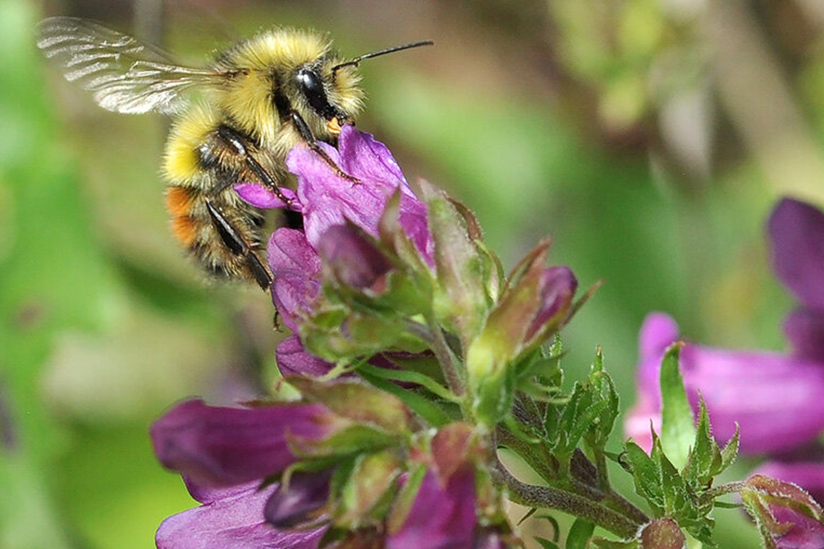An expert on bees and other pollinators discusses the recently approved vaccine to protect honeybees from a bacterial scourge and gives tips for helping these ecologically crucial species survive.
In a headline-making move, the U.S. Department of Agriculture recently approved the first honeybee vaccine against American foulbrood disease, a bacterial illness that has partially contributed to dramatic drops in U.S. honeybee populations. The vaccine will be fed to queen bees, which will then pass immunity to their offspring.
Laura Melissa Guzman, Gabilan Assistant Professor of Biological Sciences and Quantitative and Computational Biology at the USC Dornsife College of Letters, Arts and Sciences, studies pollinator biodiversity, including bee populations. She sees the vaccine as an exciting and important development partly because it may end up protecting more species than just honeybees.
Building on a lifelong fascination with both biology and puzzles, Guzman uses statistical modeling and a form of artificial intelligence called machine learning to understand where and why pollinator populations are declining as well as how we can help protect these crucial species.
She recently answered questions about her work and the implications of the new honeybee vaccine.
What first sparked your interest in science, and what led you to your current research?
I have been interested in science, especially biology, since I was a little kid. I have also always loved solving puzzles, and my family supported this curiosity. I was very fortunate to be able to participate in science camps and university experiences when I was in high school, and very early on I realized that I loved research. Most recently, I began including bees in my research because I wanted to use my skills to help solve conservation problems.
Describe your current research.
I am interested in figuring out whether pollinators are declining, and what could be causing their decline (climate change or pesticide use, for example). Pollinators include birds, bats, butterflies, moths, flies, beetles, wasps, and bees. Currently, my research focuses on bees and butterflies. Most of my work involves re-creating bee and butterfly distributions through time across the North American continent particularly using community science data and data from museums.
Why is pollinator biodiversity important?
Most of our food production — about three-fourths of the crops we eat — depends on pollinators. According to the Intergovernmental Science-Policy Platform on Biodiversity and Ecosystem Services report on pollinators, $235 billion to $577 billion worth of crop production is attributed to pollinators. Some of our most popular food crops, such as tomatoes, almonds, apples, melons and broccoli, can’t produce the fruits and vegetables we eat unless they are pollinated by insects such as bees, butterflies and beetles.
In some cases, this pollination happens through the natural activity of native and wild pollinators. In other cases, crops are pollinated by honeybees that are raised and transported to fields or orchards to pollinate specific trees or plants.
